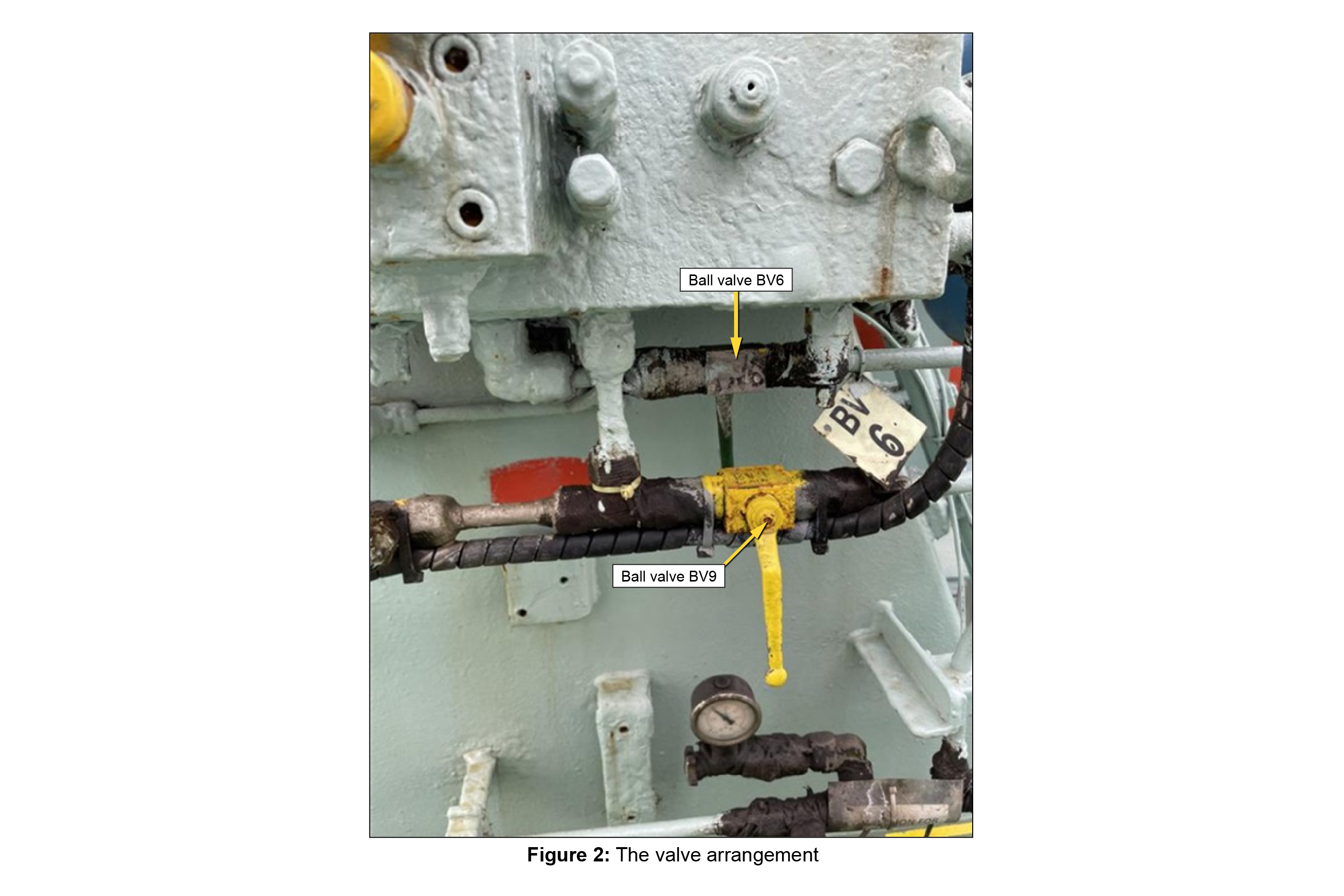Uncontrolled launching of fast rescue craft from Lord of the Isles during a training exercise
Location: Lochboisdale, Scotland.
Completed preliminary assessment (PA) summary 1/25: Lord of the Isles
Synopsis
At 1645 on 23 August 2025, the crew of the passenger/car ferry Lord of the Isles were carrying out an exercise involving the launch of the vessel’s fast rescue craft (FRC) (Figure 1) using stored power[footnote 1]. The FRC fell 9m to the water on launching. There were no injuries, but the FRC was damaged beyond repair and had to be replaced.

Narrative
At 1558, Lord of the Isles departed Lochboisdale, South Uist, Scotland on a scheduled service to Mallaig on the mainland. The crew planned to carry out a routine test of the stored power launching system with an FRC drill shortly after leaving port. The chief officer (C/O) conducted a toolbox talk, where the procedure for the stored power launch procedure was discussed. The master stopped the vessel within the Lochboisdale harbour limits for the drill to take place.
The vessel-specific procedure for the stored power launch of the FRC contained 20 steps, including the operation of seven different ball valves in the davit’s hydraulic system that were located on two decks. The crew worked under instruction from the C/O. When all the valves were thought to be in the correct positions and the boat was slewed out into the launching position, the C/O gave the order to a crew member to operate the launch cable. When the crew member pulled the launch cable, the uncrewed FRC immediately fell about 9m to the water.
The master witnessed the FRC fall and quickly confirmed there were no injuries to the crew. The FRC was recovered and the chief engineer (C/E) inspected the system. The C/E found that a valve for draining pressure from the hydraulic system was in the open position. The operation of this valve was not included in the procedure for launching the FRC using stored power, and its opening meant that there was no hydraulic oil pressure available in the system to arrest the fall of the FRC once the launch cable was pulled.
The stored power launch system was subsequently tested using the documented procedure with the correct valve sequence and proven to work without incident. The damage to the FRC was inspected and deemed irreparable. Three days after the accident, the FRC was replaced.
Findings
The stored power launching procedure required the opening of a ball valve labelled as BV6. During the launch, the C/O had opened an adjacent drain valve (BV9), which would typically only be used for maintenance, under the impression it was BV6. Examination of the valves showed that the label for BV9 was missing and the label for BV6 was placed adjacent to BV9 (Figure 2). The handle for BV9 was painted yellow and the handle for BV6 behind it was painted green.

The procedure for the launching of the FRC under stored power was complex and required a significant number of actions in different locations. Combining the test of the stored power system with a routine launch of the FRC required crew who were not fully familiar with the task to undertake the valve operations.
While following the documented procedure, the C/O had misidentified BV6 and opened BV9, draining the system of pressure. This allowed the FRC to fall once the launch cable was pulled, releasing the boat from its stowed position.
The FRC sustained damage to its deck, with two cracks visible from the forward corners of its lifting frame. The FRC’s engine was displaced from its mountings due to the force of the impact as the boat hit the water. Other components within the engine bay had also moved.
Actions taken
CalMac Ferries Limited has:
-
updated the stored power launching procedure and vessel-specific risk assessments to detail the risk of operating the hydraulic system valves incorrectly.
-
secured the handle of BV9 to prevent inadvertent operation.
-
added new labelling to the valves in the hydraulic system.
-
scheduled a replacement of the FRC davit system on Lord of the Isles.
| Ship particulars | |
|---|---|
| Vessel’s name | Lord of the Isles |
| Flag | UK |
| Classification society | Lloyd’s Register |
| IMO number | 8710869 |
| Type | Passenger/car ferry |
| Registered owner | Caledonian Maritime Assets Limited |
| Manager | CalMac Ferries Limited |
| Operator | CalMac Ferries Limited |
| Construction | Steel |
| Year of build | 1988 |
| Length overall | 75.78m |
| Registered length | 75.78m |
| Gross tonnage | 3,504t |
| Minimum safe manning | 14 |
| Authorised cargo | Not applicable |
| Voyage particulars | |
| Port of departure | Lochboisdale, Scotland |
| Port of arrival | Mallaig, Scotland |
| Type of voyage | Scheduled ferry service |
| Cargo information | Not applicable |
| Manning | 31 |
| Marine casualty information | |
| Date and time | 23 August 2025 at 1645 |
| Type of marine casualty or incident | Less Serious Marine Casualty |
| Location of incident | Within Lochboisdale harbour limits |
| Place on board | Bridge deck, port side |
| Injuries/fatalities | None |
| Damage/environmental impact | Fast rescue craft damaged beyond repair |
| Ship operation | On passage |
| Voyage segment | On passage |
| External and internal environment | Overcast; slight seas with low swell; dry with good visibility; air temperature 16°C |
| Persons on board | 31 crew, 133 passengers |
-
A system test designed to enable the FRC to be launched from a vessel in the event of no electrical power on board. On Lord of the Isles, the power to launch the FRC was supplied by pressure stored in a hydraulic accumulator. ↩